Skulls of large carnivores and some rabbits
1/31
There's no tags or description
Looks like no tags are added yet.
Name | Mastery | Learn | Test | Matching | Spaced |
|---|
No study sessions yet.
32 Terms
Canidae
rostrum elongate and narrow, enlarged canines, well-developed carnassials, 42 teeth (DF = 3/3, 1/1, 4/4, 2/3)
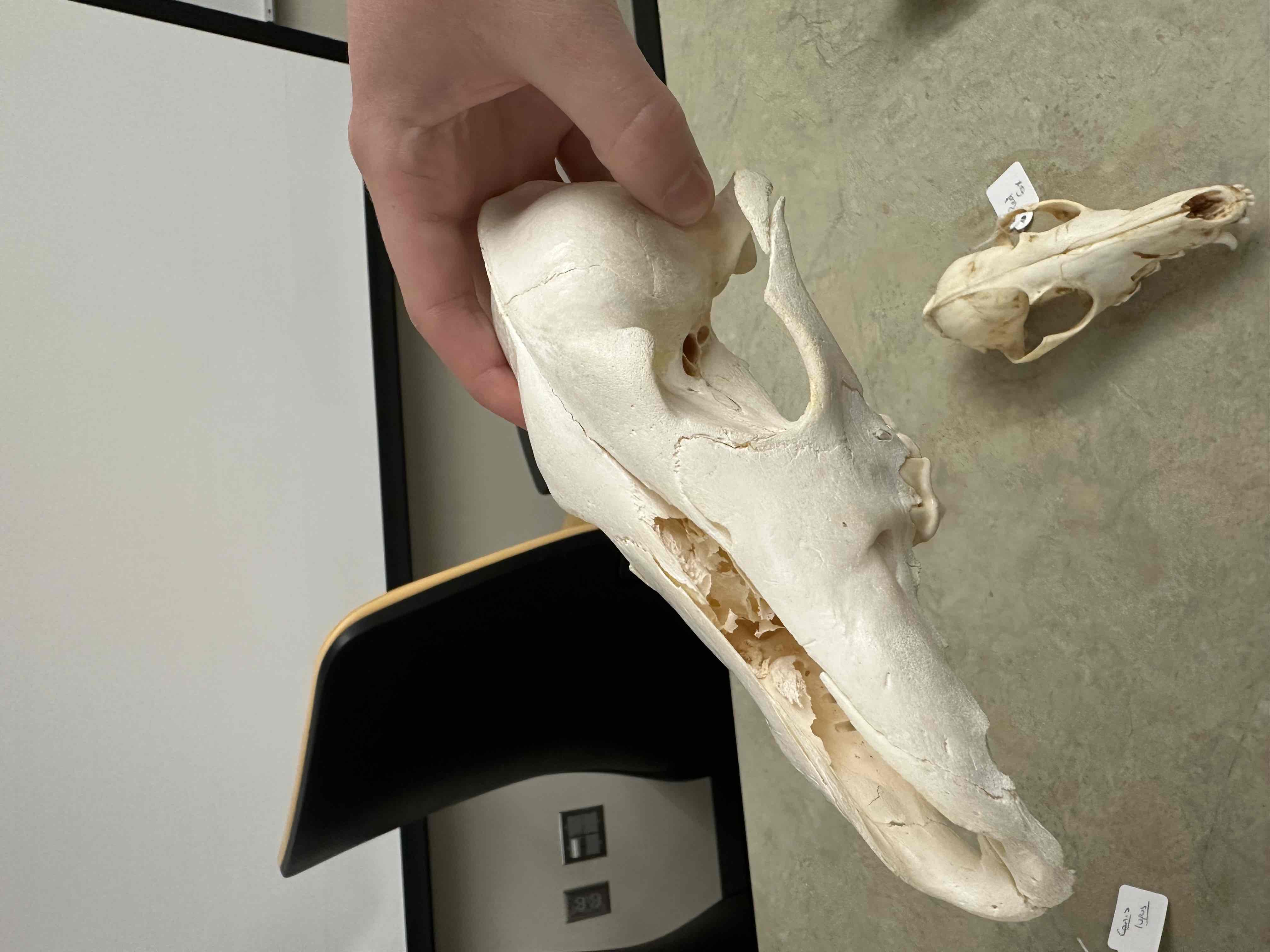
Canis latrans (coyote)
1. postorbital process thickened convex dorsally
2. elongate rostrum
3. ventral border of dentary without step Canis lupus (gray wolf)
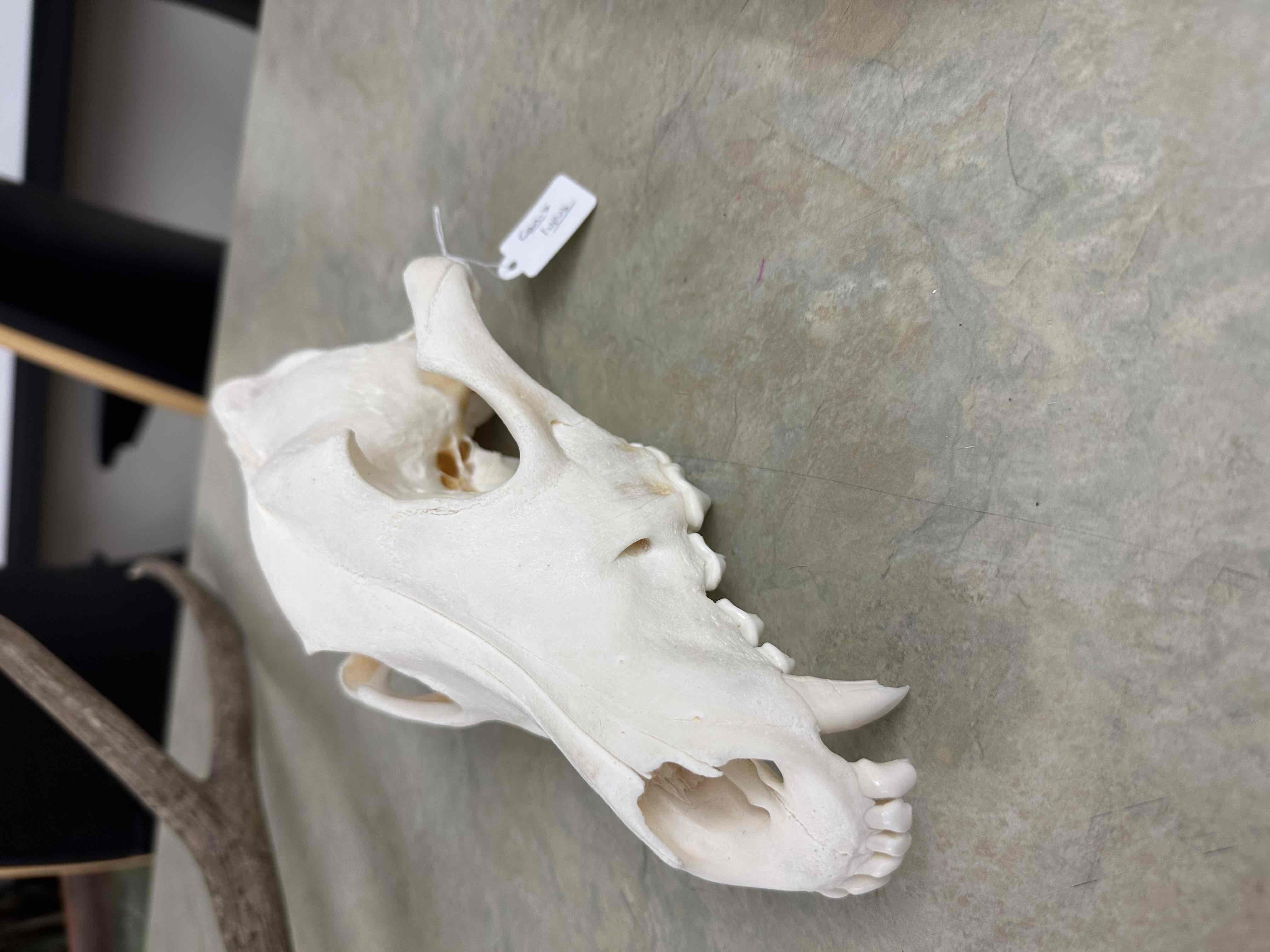
Canis lupus (gray wolf)
similar to Canis latrans but larger
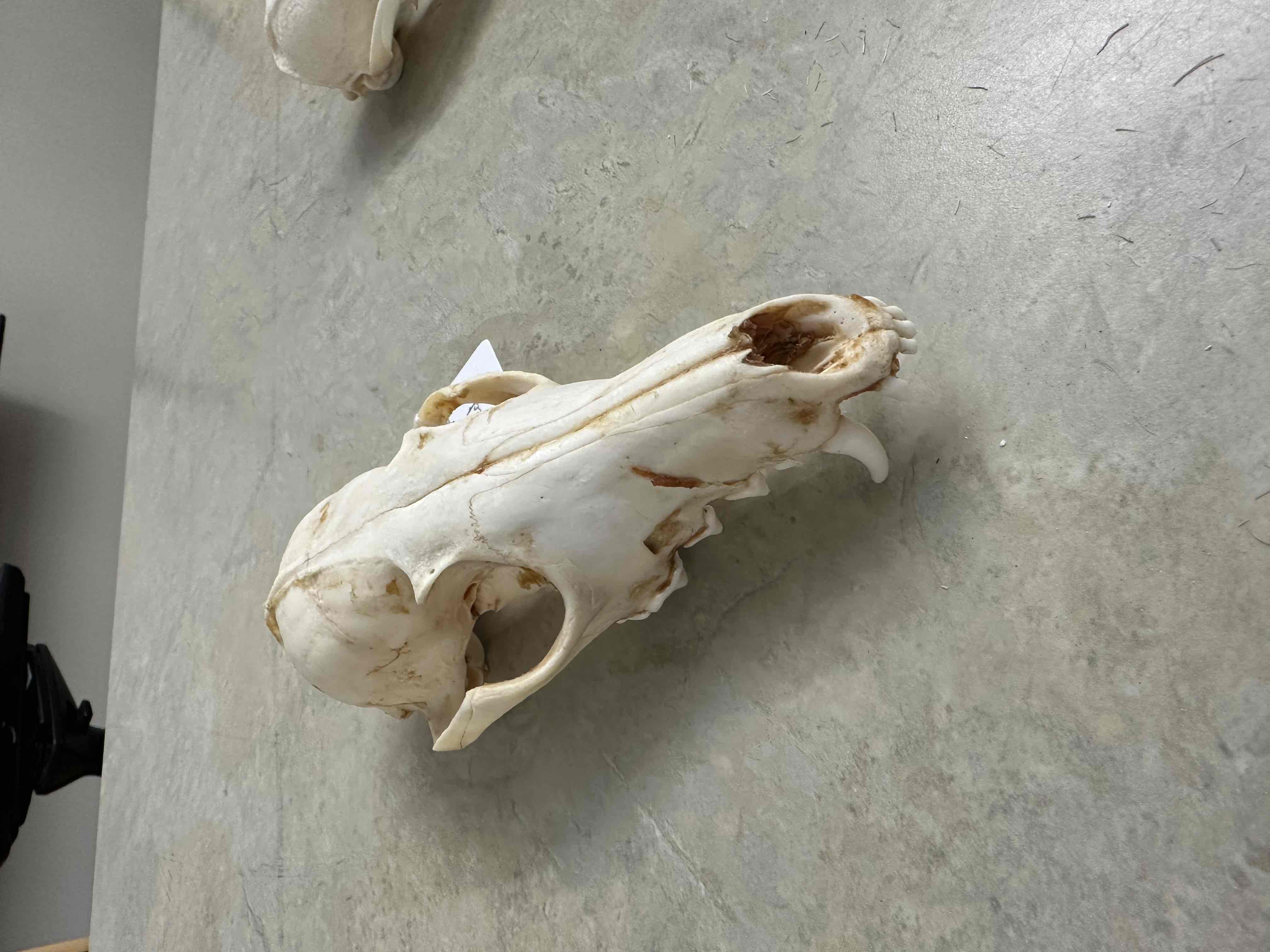
Vulpes vulpes (red fox)
1. temporal ridges converge to form "v" shape
2. depressions on postorbital processes
3. total length less than 160 mm
4. ventral border of dentary without step
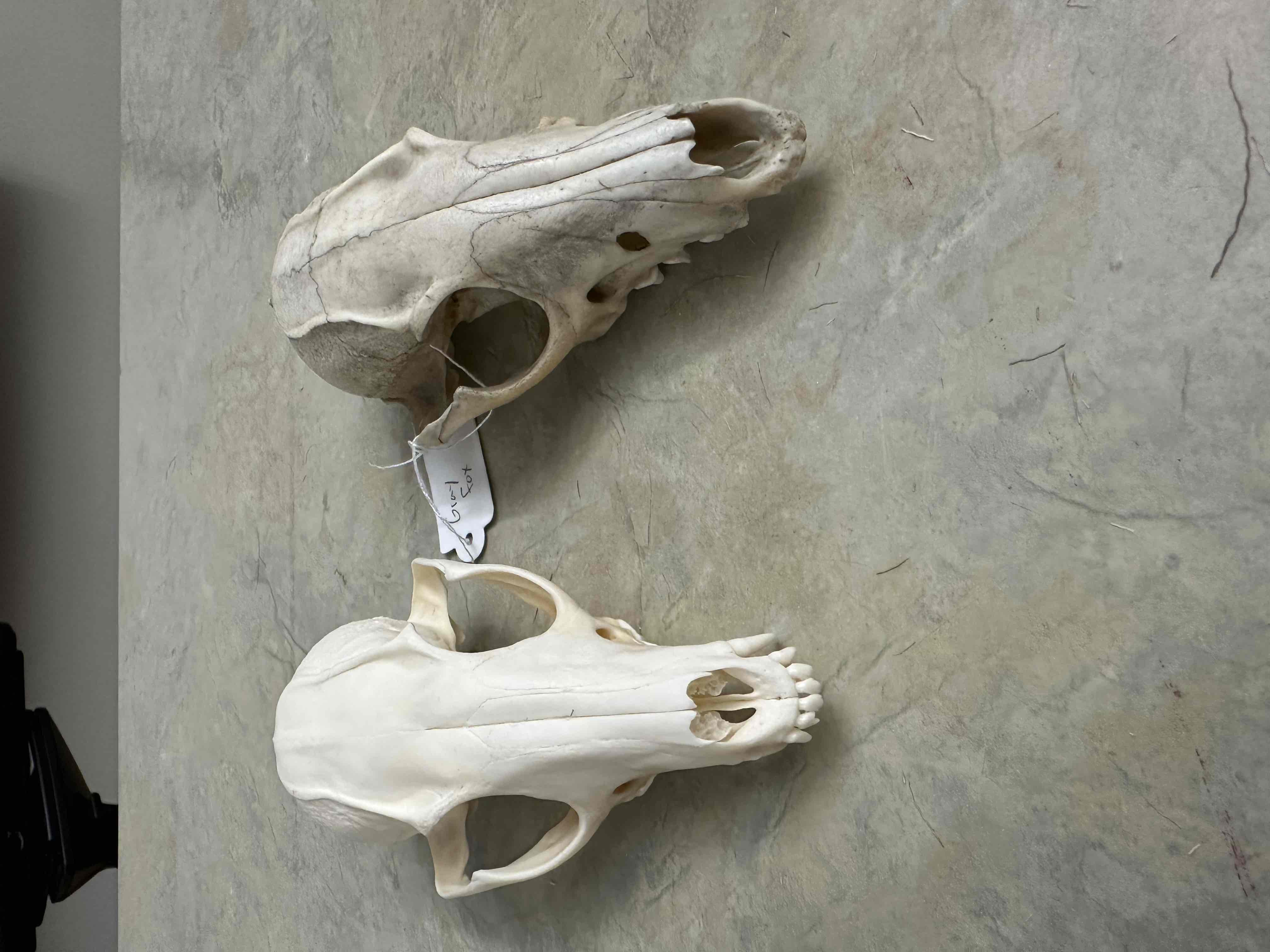
Urocyon cinereoargenteus (gray fox)
1. temporal ridges converge to form "u" shape
2. deep depressions on postorbital process
3. length of skull approximately 130 mm
4. ventral border of dentary with prominent step
Ursidae
enlarged canines, no well developed carnassial pair, skull is more cat-like than dog-like (rostrum is short), 42 teeth (DF = 3/3, 1/1, 4/4, 2/3)
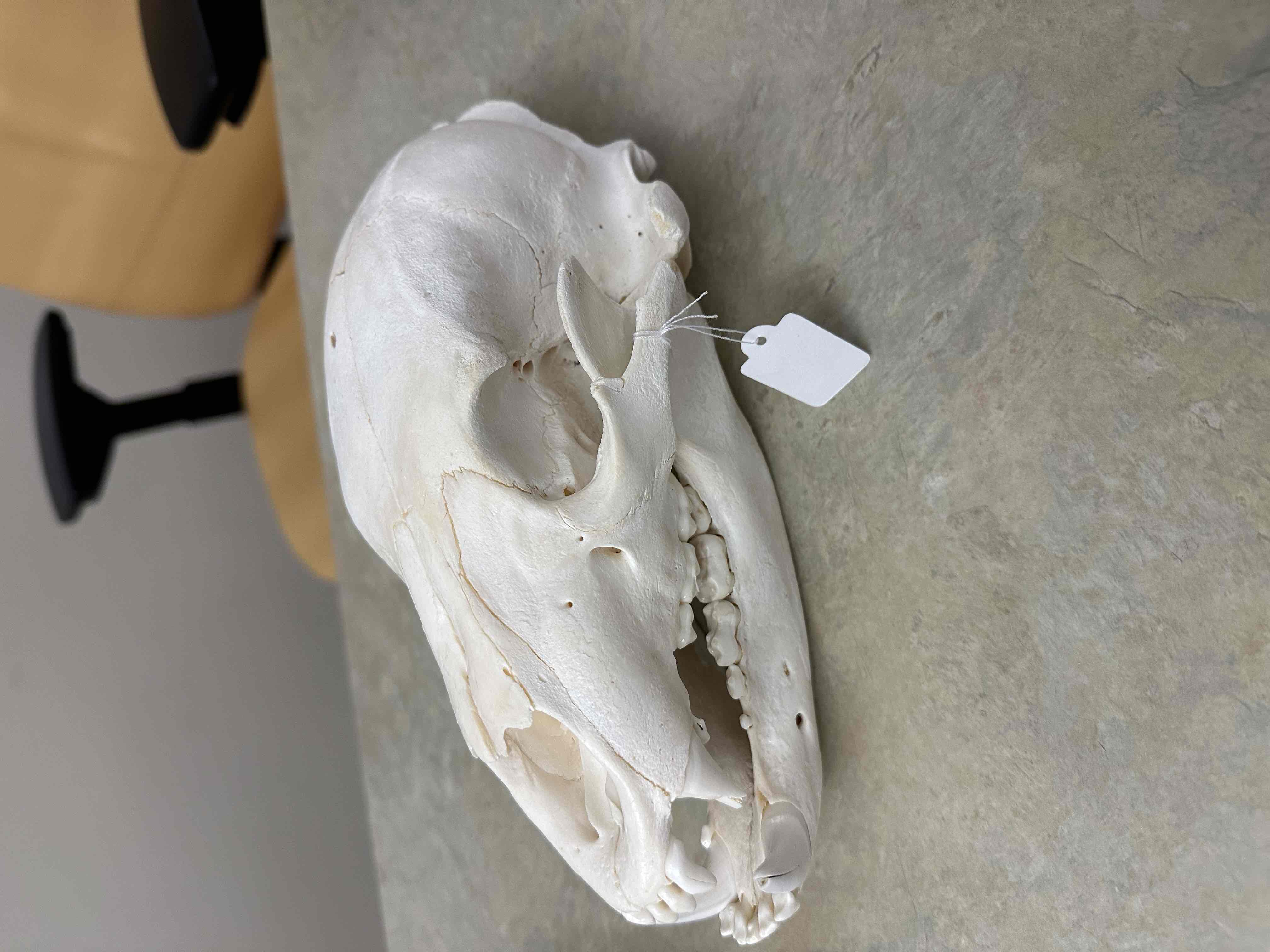
Ursus americanus (black bear)
1. molars with flat, broad crown
2. diastema on lower jaw
3. hard palate extends beyond molars
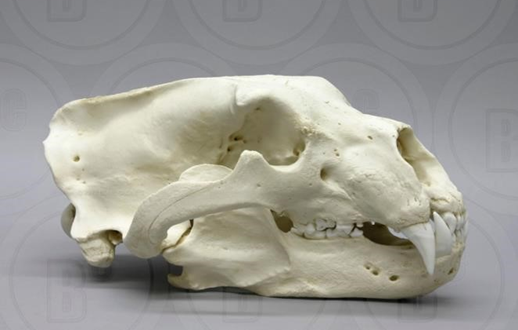
Ursus maritimus (polar bear)
Procyonidae
40 teeth (DF = 3/3, 1/1, 4/4, 2/2)
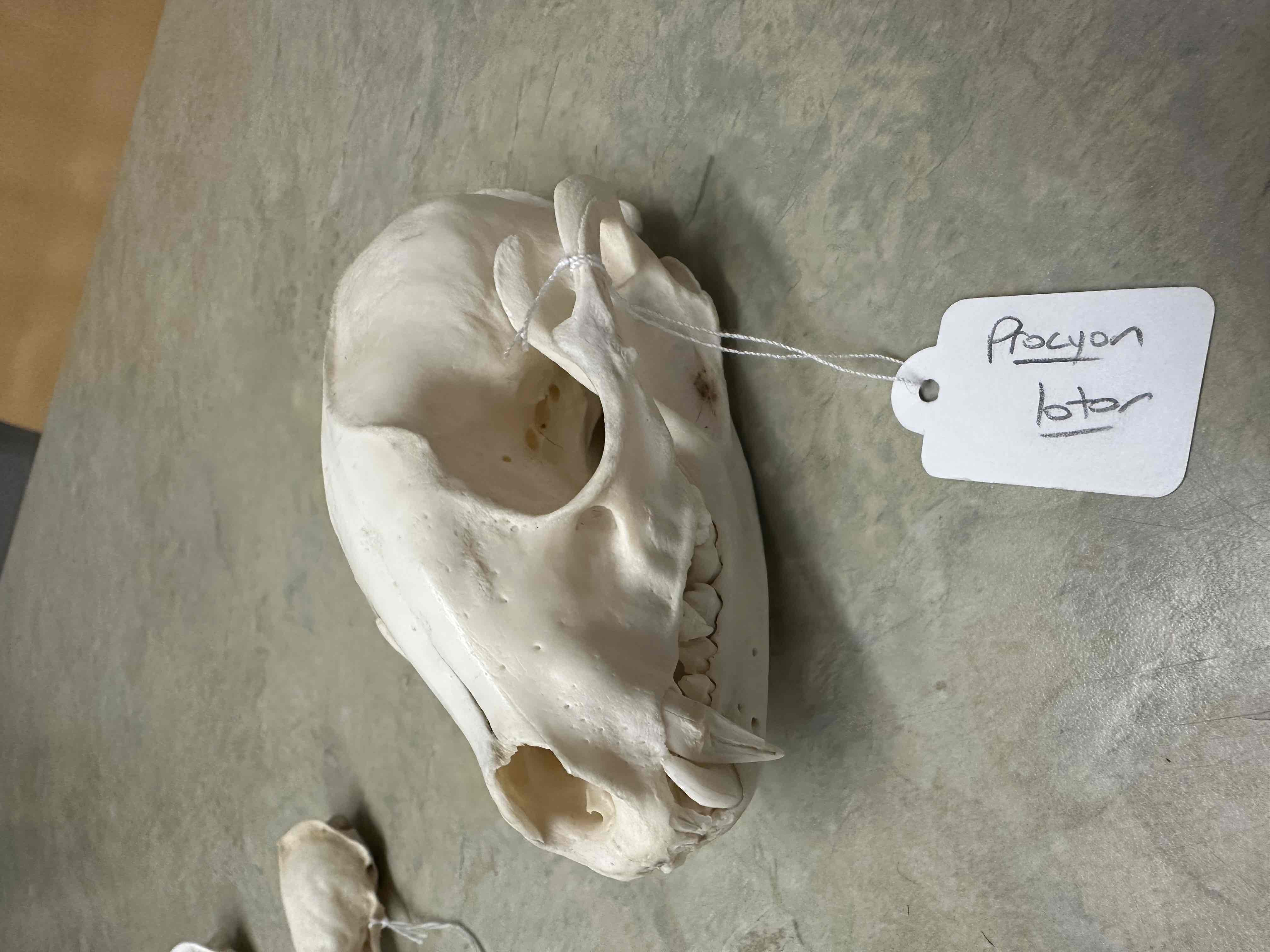
Procyon lotor (raccoon)
1. poorly developed carnassials
2. molars broad, canines round
3. palate extends beyond last molars
4. nasals not upturned anteriorly
5. skull rounded on upper surface
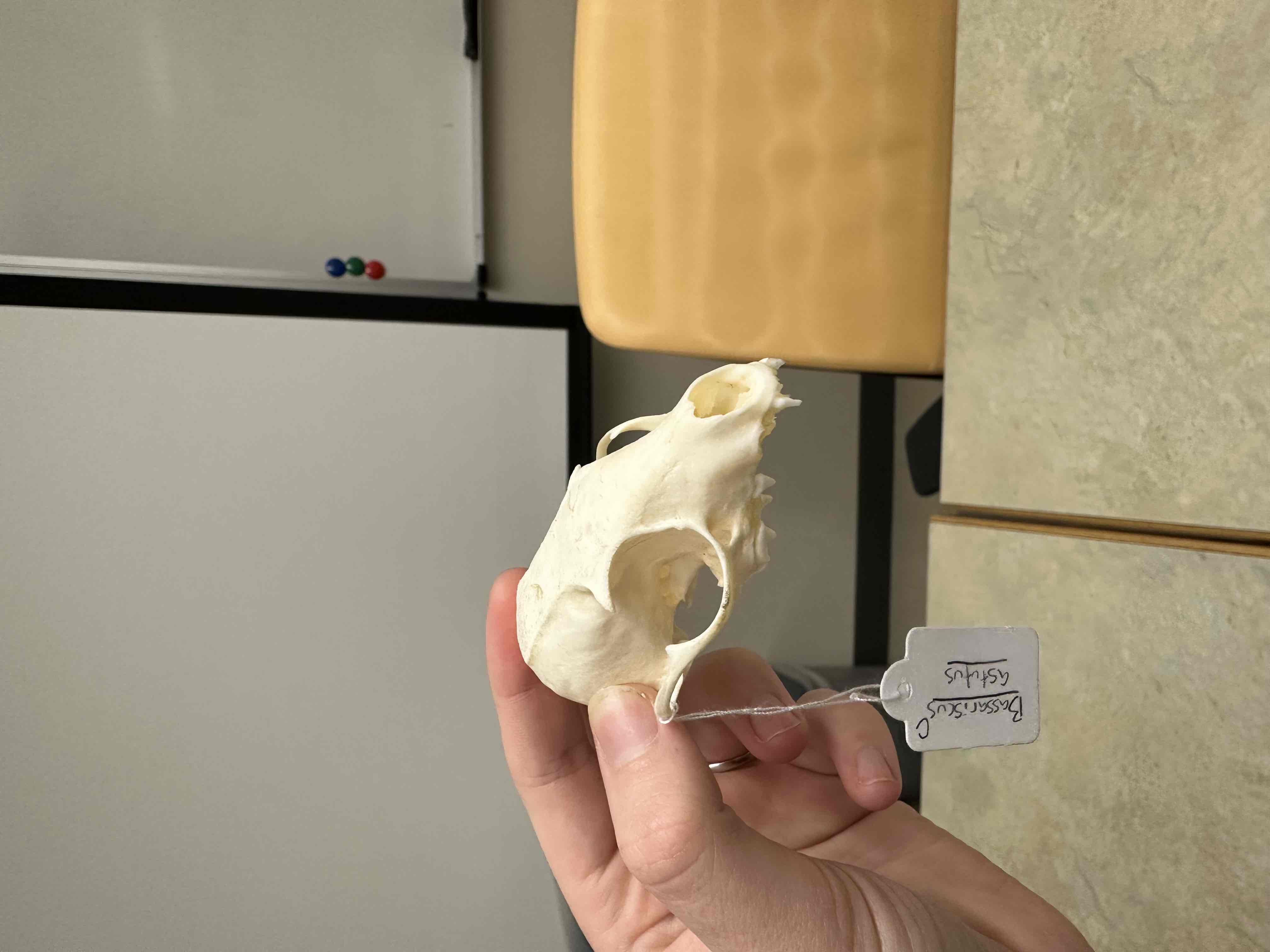
Bassariscus astutus (ringtail)
Mustelidae
teeth 38 or less, enlarged canine, short rostrum, carnassial pair
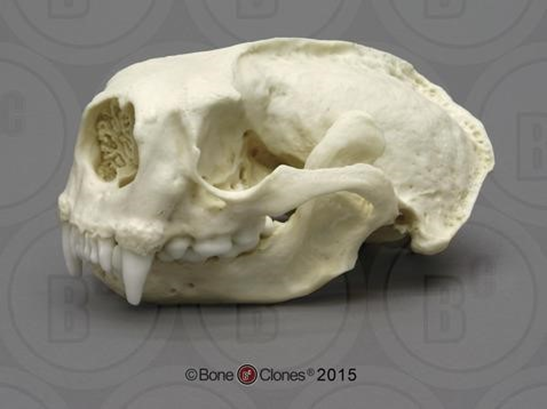
Enhydra lutris (sea otter)
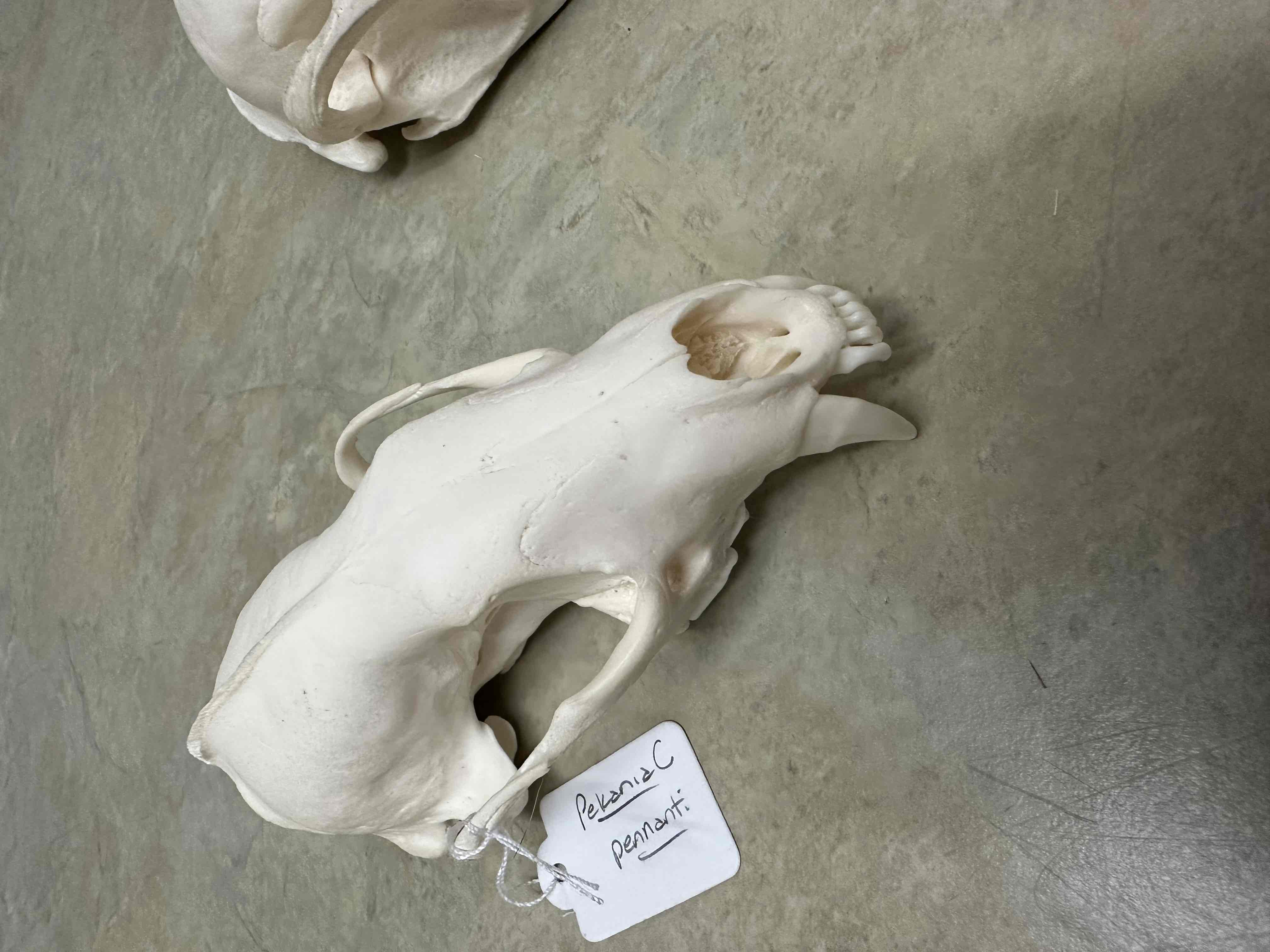
Pekania pennanti (fisher)
1. palate extends beyond last molar
2. total length of skull greater than 85 mm
3. auditory bullae not noticeably inflated
4. postorbital process rounded
5. braincase elongated
38 teeth
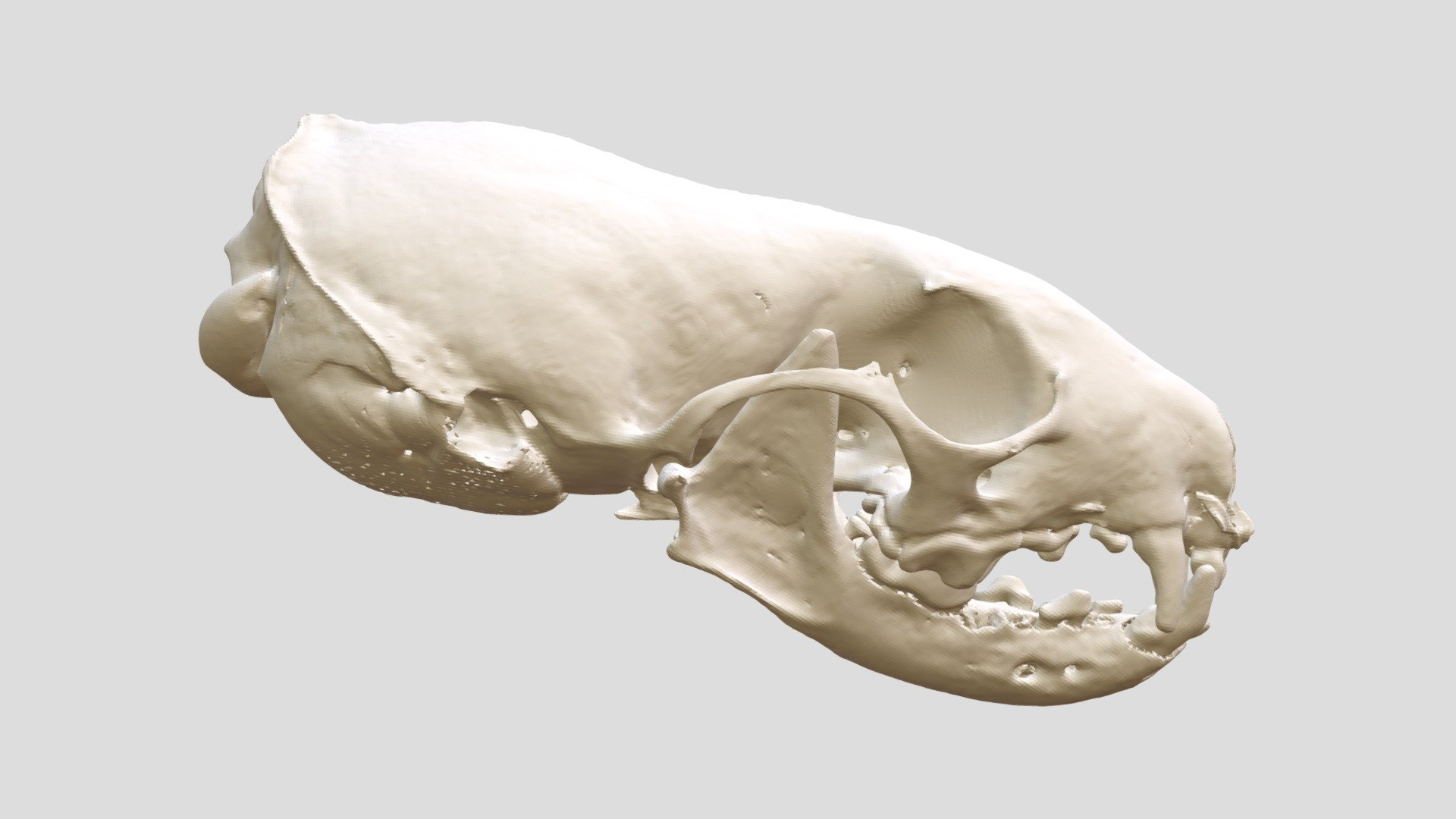
Mustela frenata (long-tailed weasel)
1. palate extends beyond last molar
2. total length of skull less than 55 mm
3. inflated auditory bullae
4. postorbital processes pointed
5. upper molar dumbbell shaped
6. braincase is elongated
7. upper surface of skull is flat
34 teethNeovison vison (mink)
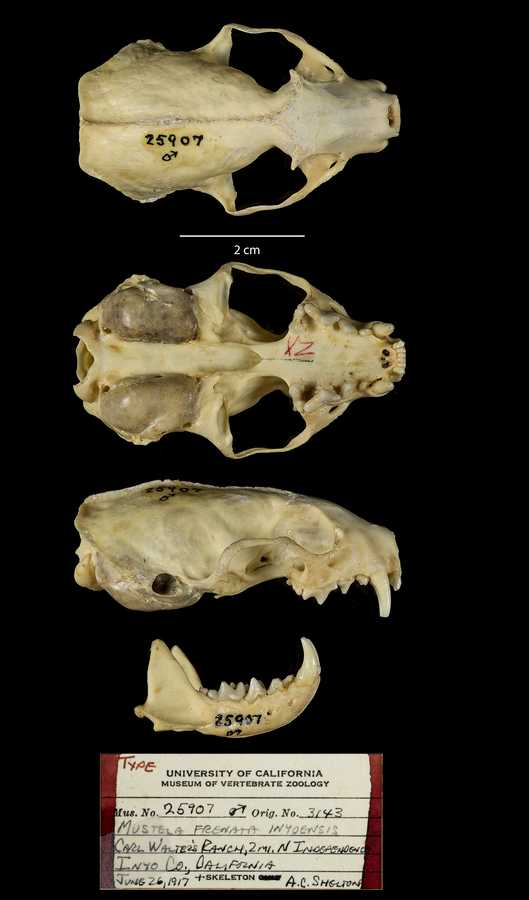
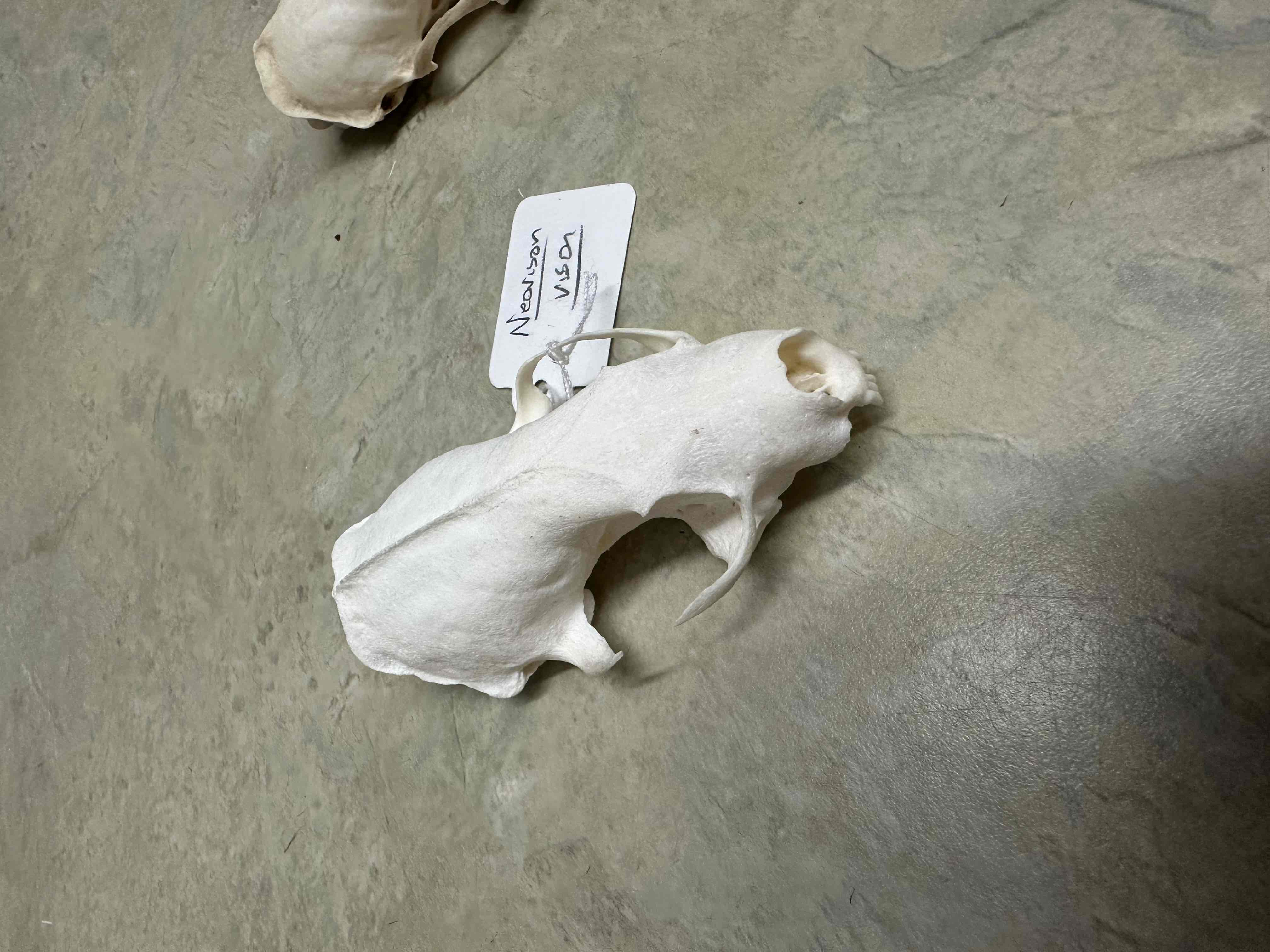
Neovison vison (mink)
1. total length greater than 55 mm
2. blunt postorbital processes
3. upper molar dumbbell shaped
4. inflated auditory bullae
34 teeth
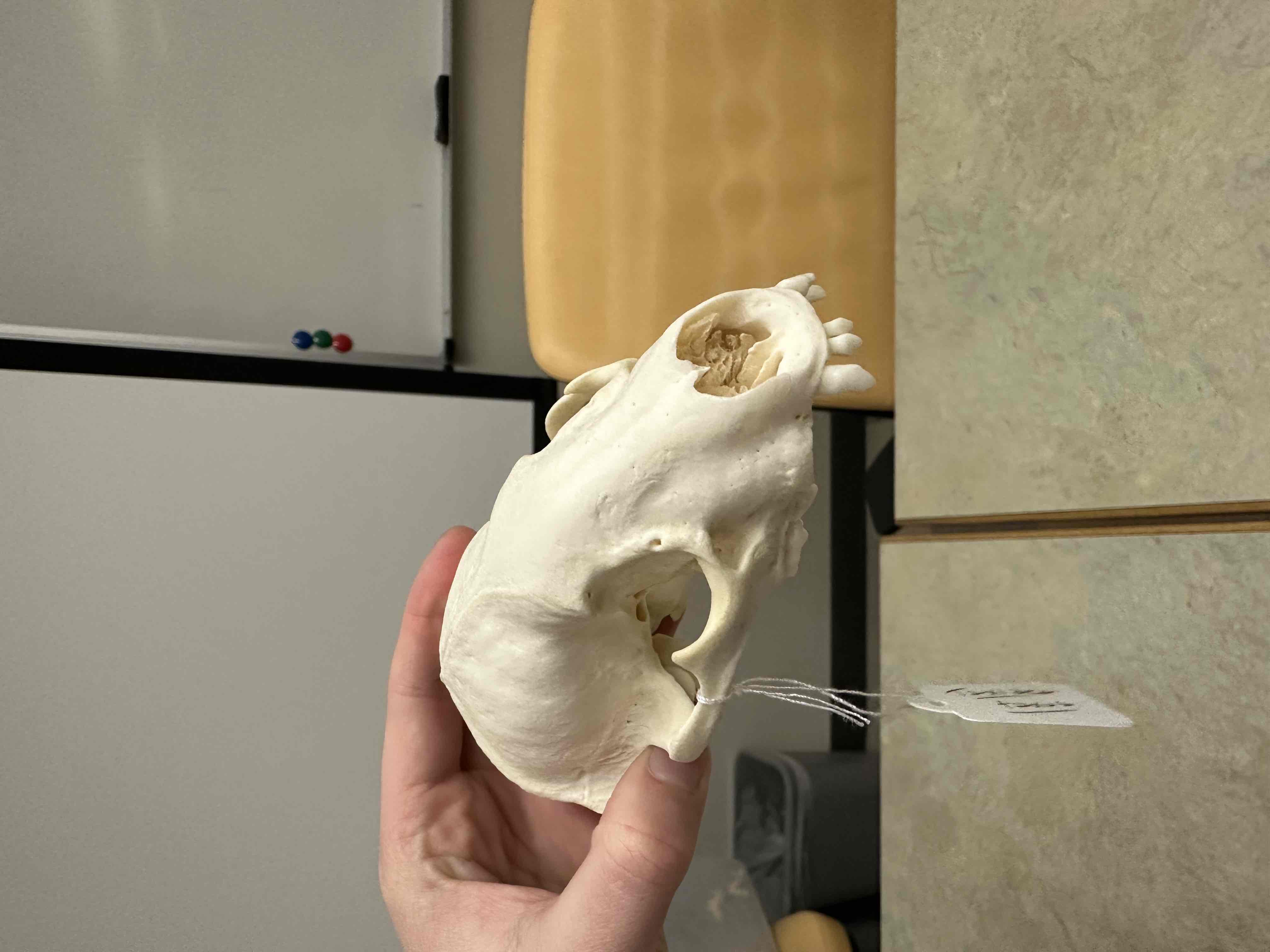
Taxidea taxus (badger)
1. triangular braincase
2. prominent sagittal crest and lambdoidal crest
3. last two molars triangular in shape
4. palate extends beyond molars
5. moderately inflated auditory bullae
34 teeth
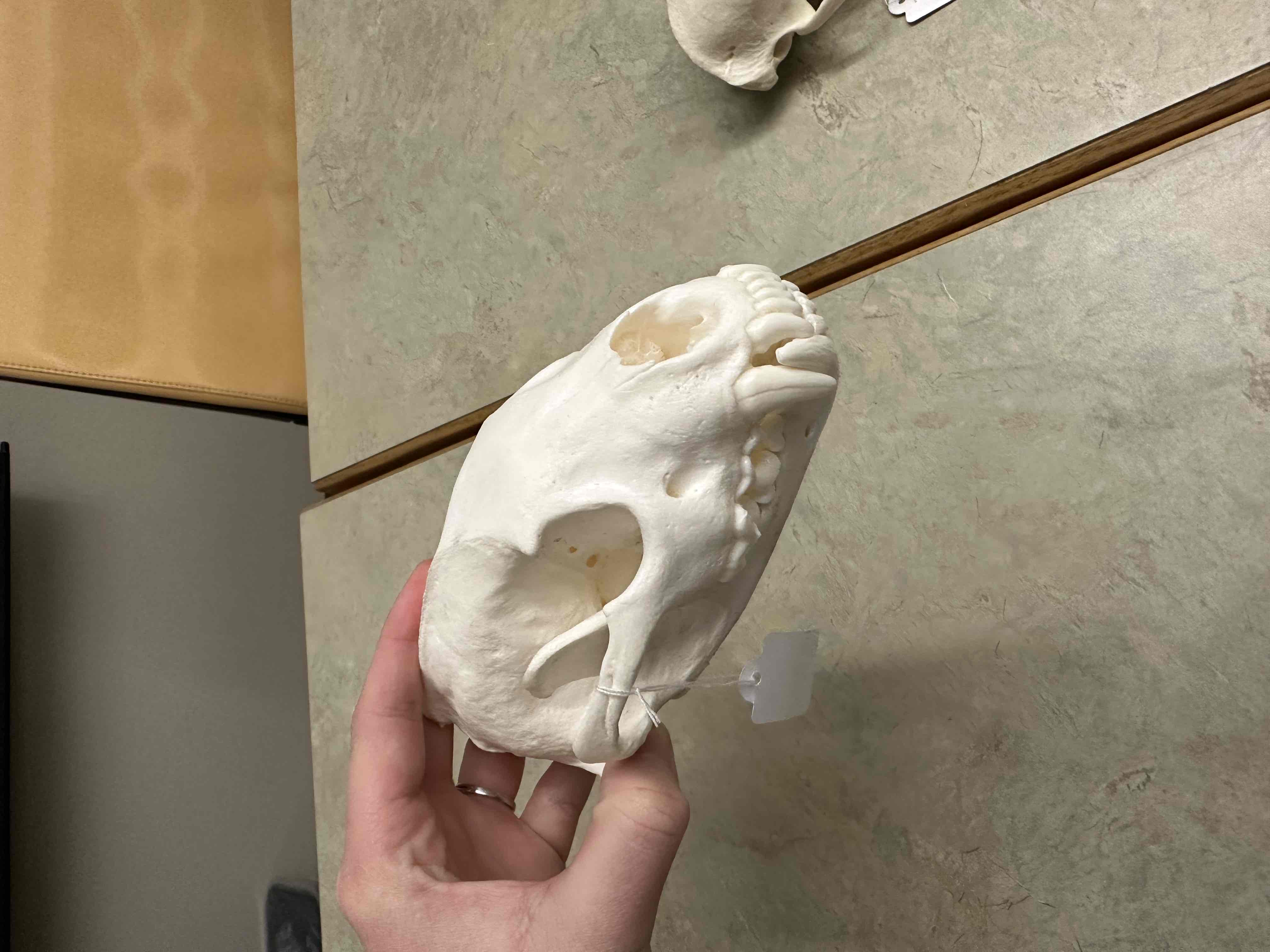
Gulo gulo (wolverine)
Felidae
teeth 30 or less, rounded skull, short, blunt rostrum, upper molar small, long canines

Puma concolor (mountain lion)
1. 30 teeth (3/3, 1/1, 3/2, 1/1)
2. 4 upper cheek teeth each side
robust skull
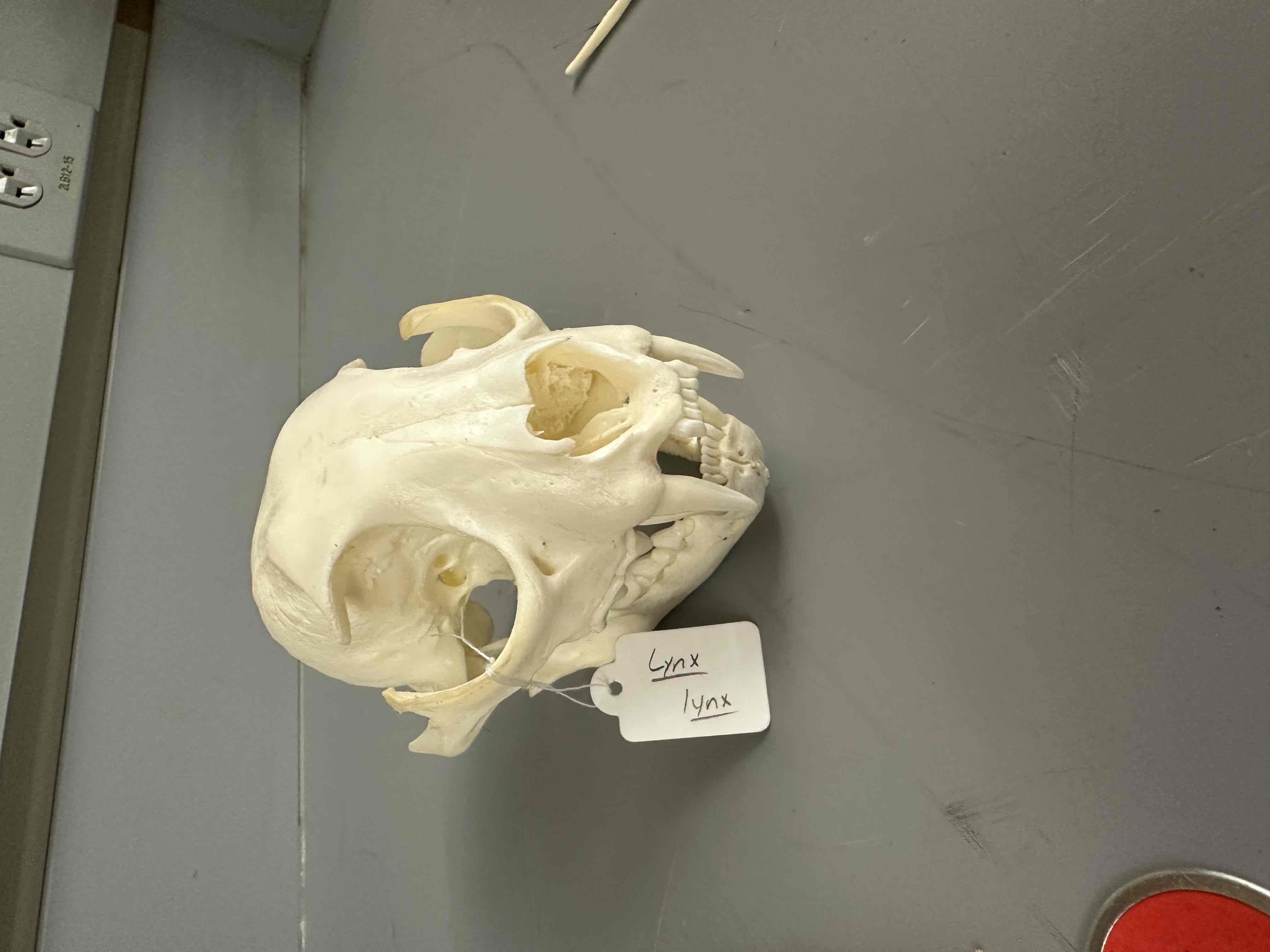
Lynx lynx (lynx)
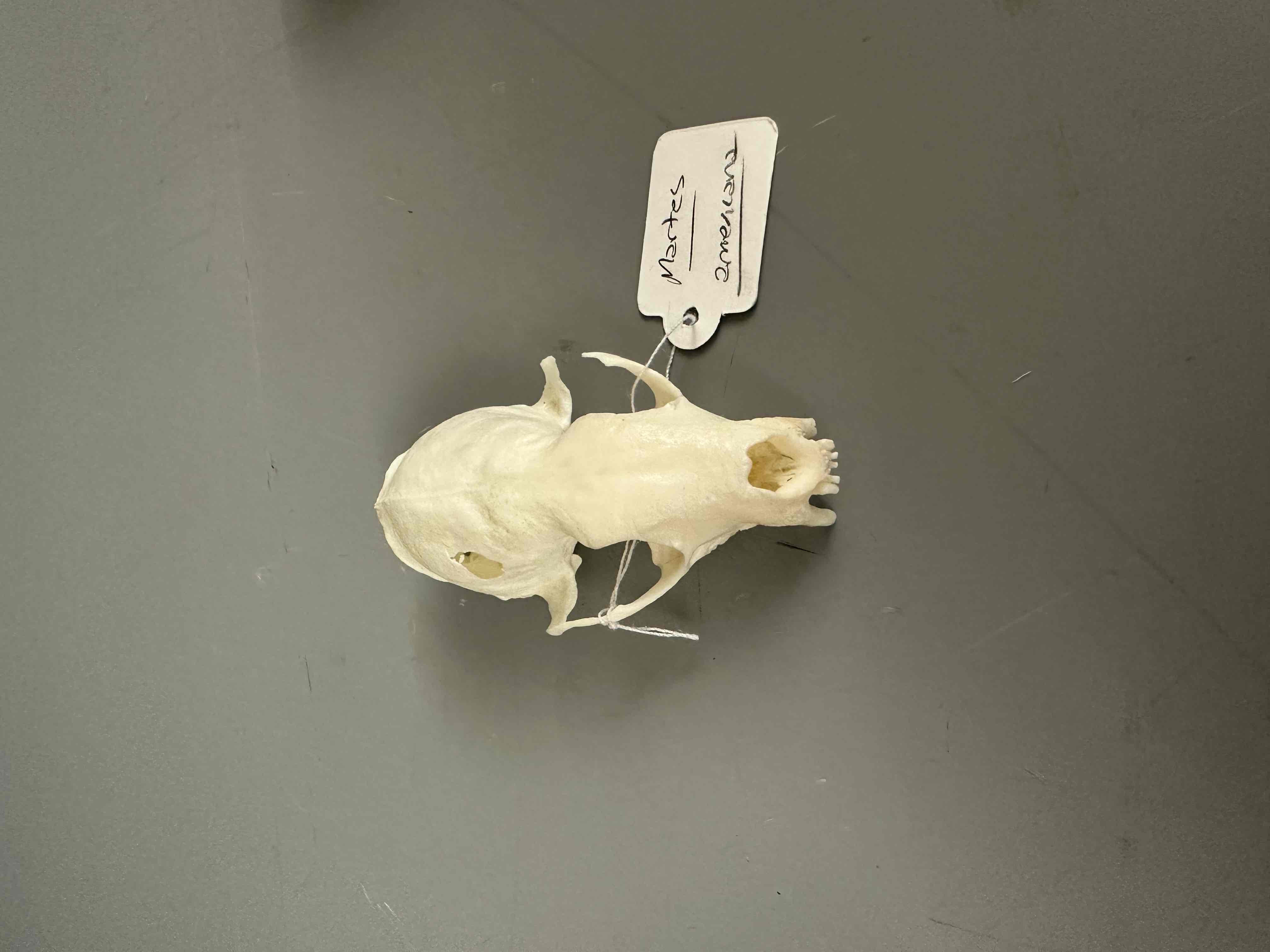
Martes Americana (American marten)
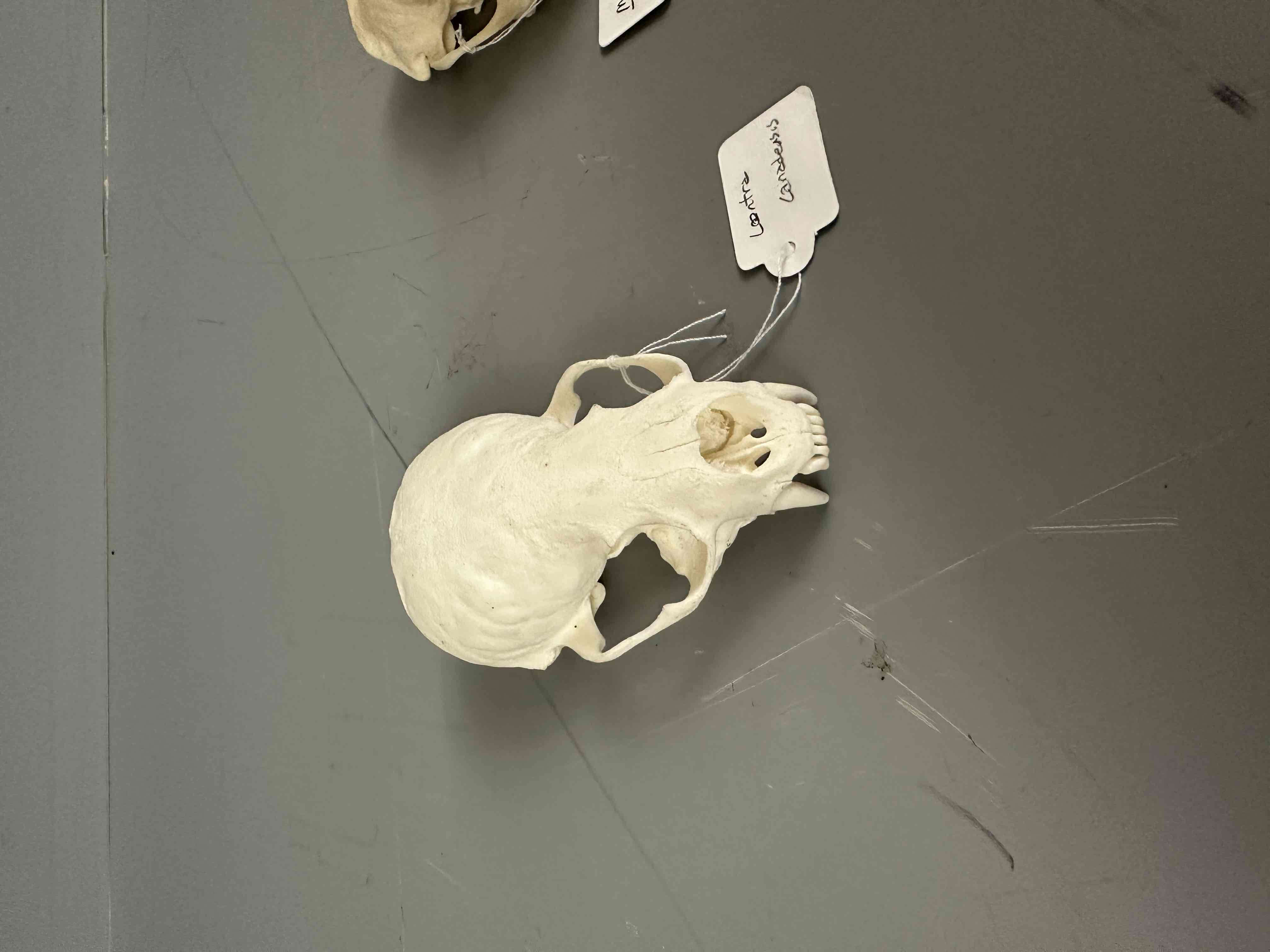
Lontra canadensis (river otter)

Mephitis mephitis (striped skunk)
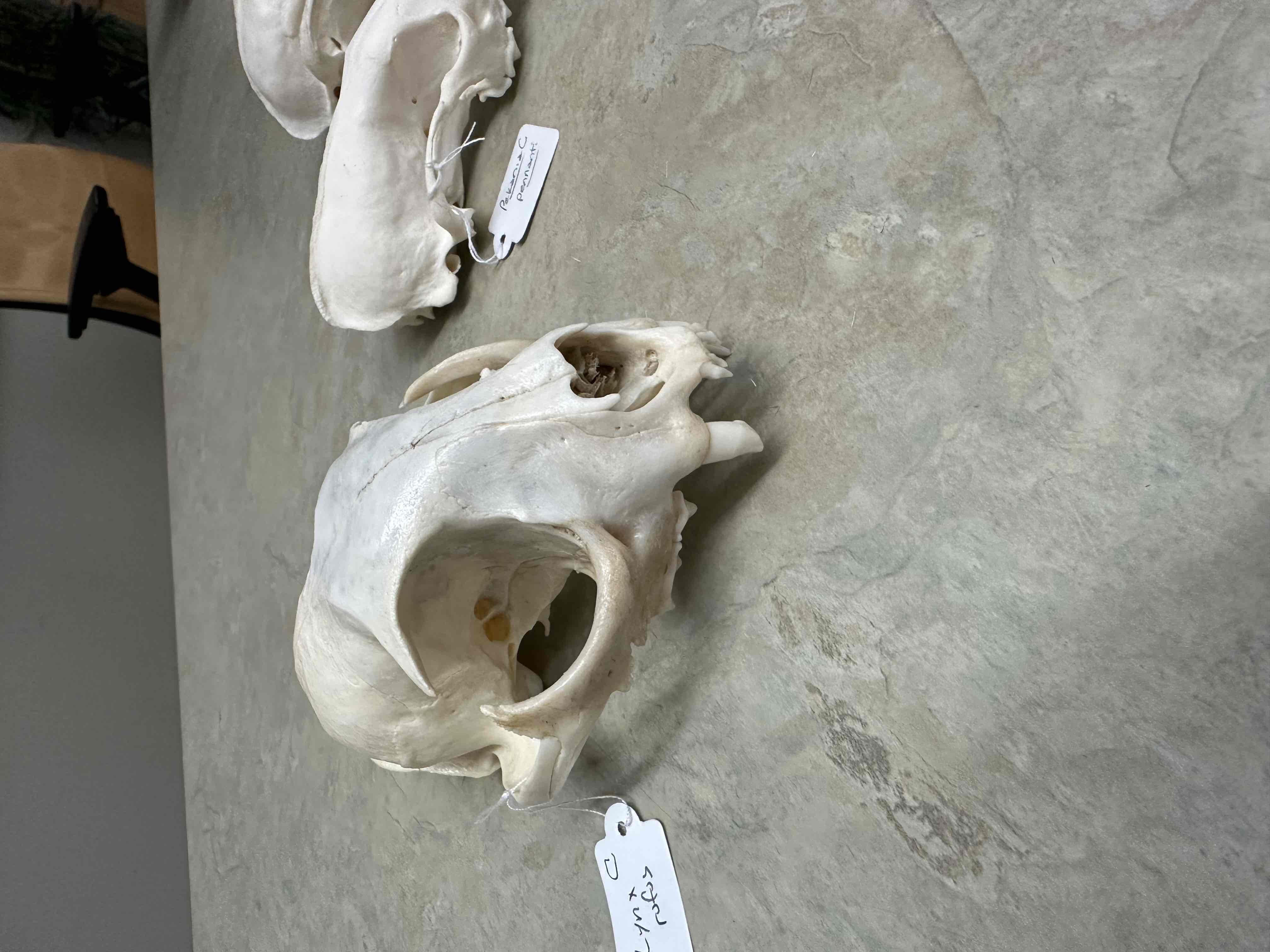
Lynx rufus (bobcat)
1. 28 teeth (3/3, 1/1, 2/2, 1/1)
2. 3 upper cheek teeth each side
Cervidae
lacrimal separated from nasal by antorbital fossa, no permanent horn cores, incisors absent above
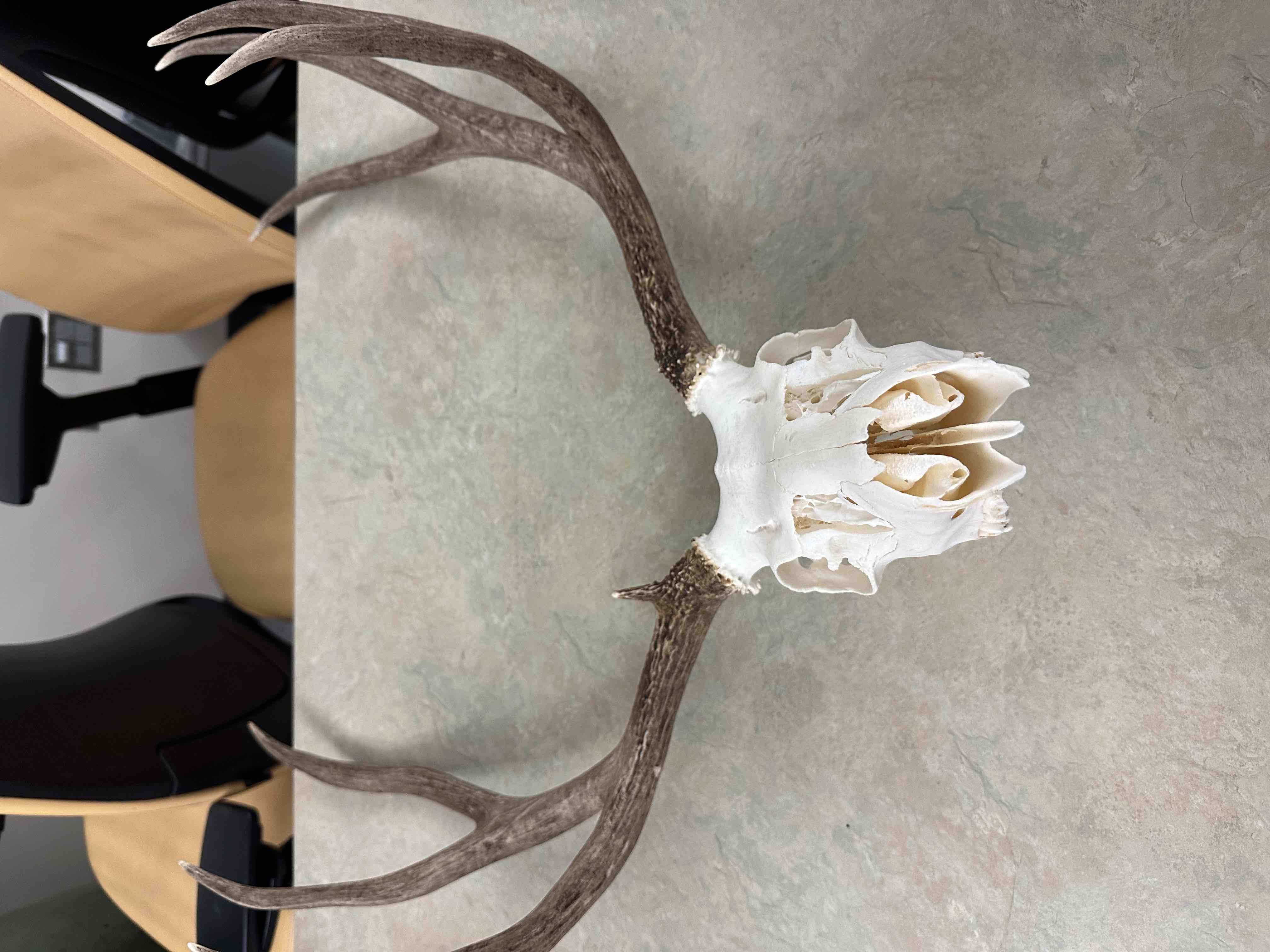
Odocoileus hemionus (mule deer)
1. deep lacrimal fossa
2. upper canines absent
3. 32 teeth (0/3, 0/1, 3/3, 3/3)
4. in males, dichotomously branching antlers
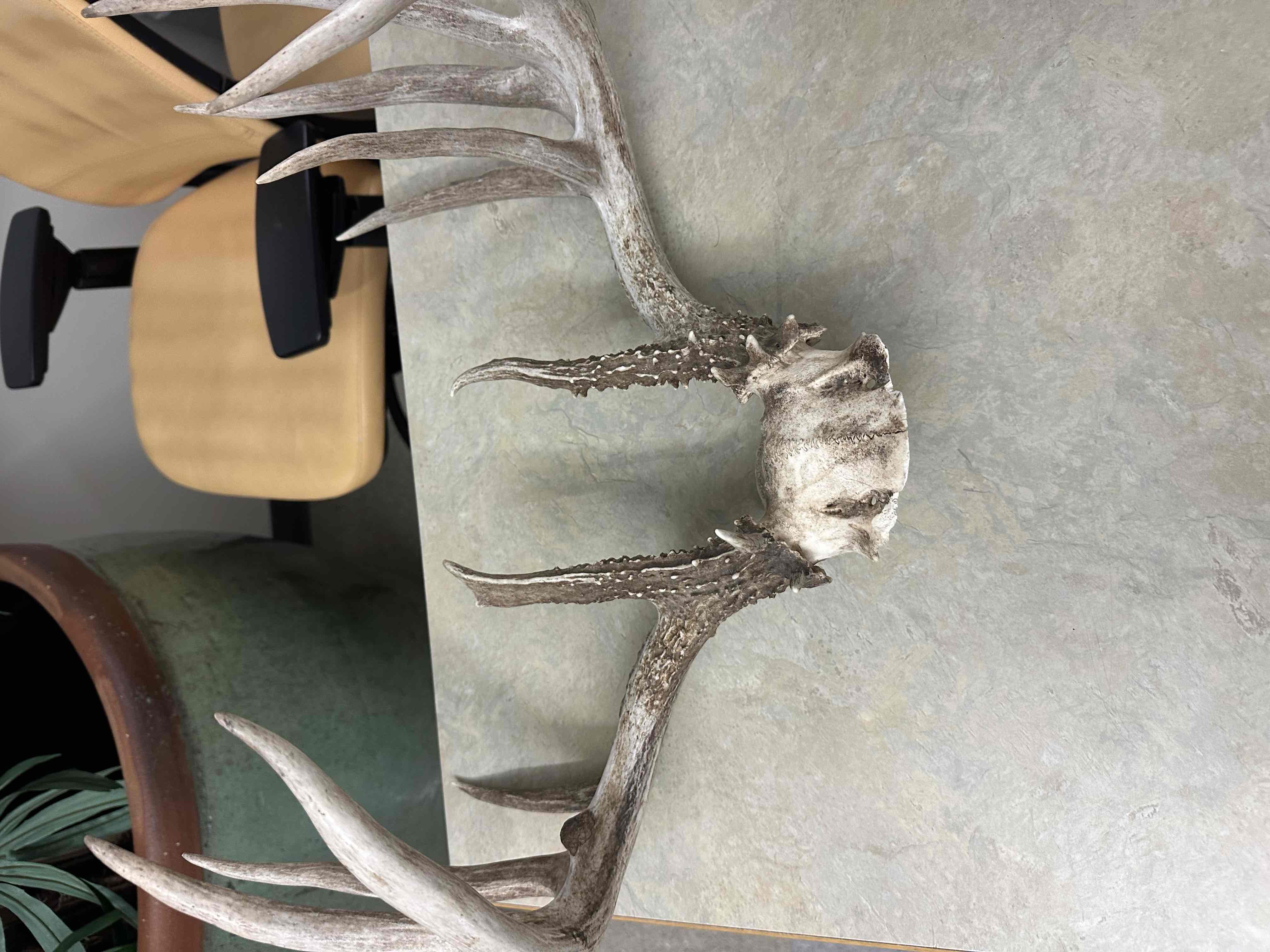
Odocoileus virginianus (white-tailed deer)
1. shallow lacrimal fossa
2. upper canines absent
3. 32 teeth (0/3, 0/1, 3/3, 3/3)
4. in males, antlers with one main beam and tines branching dorsally
Antilocapridae
lacrimal separated from nasal by antorbital fossa, permanent horn cores in both sexes, erect and bladelike, incisors absent in upper jaw
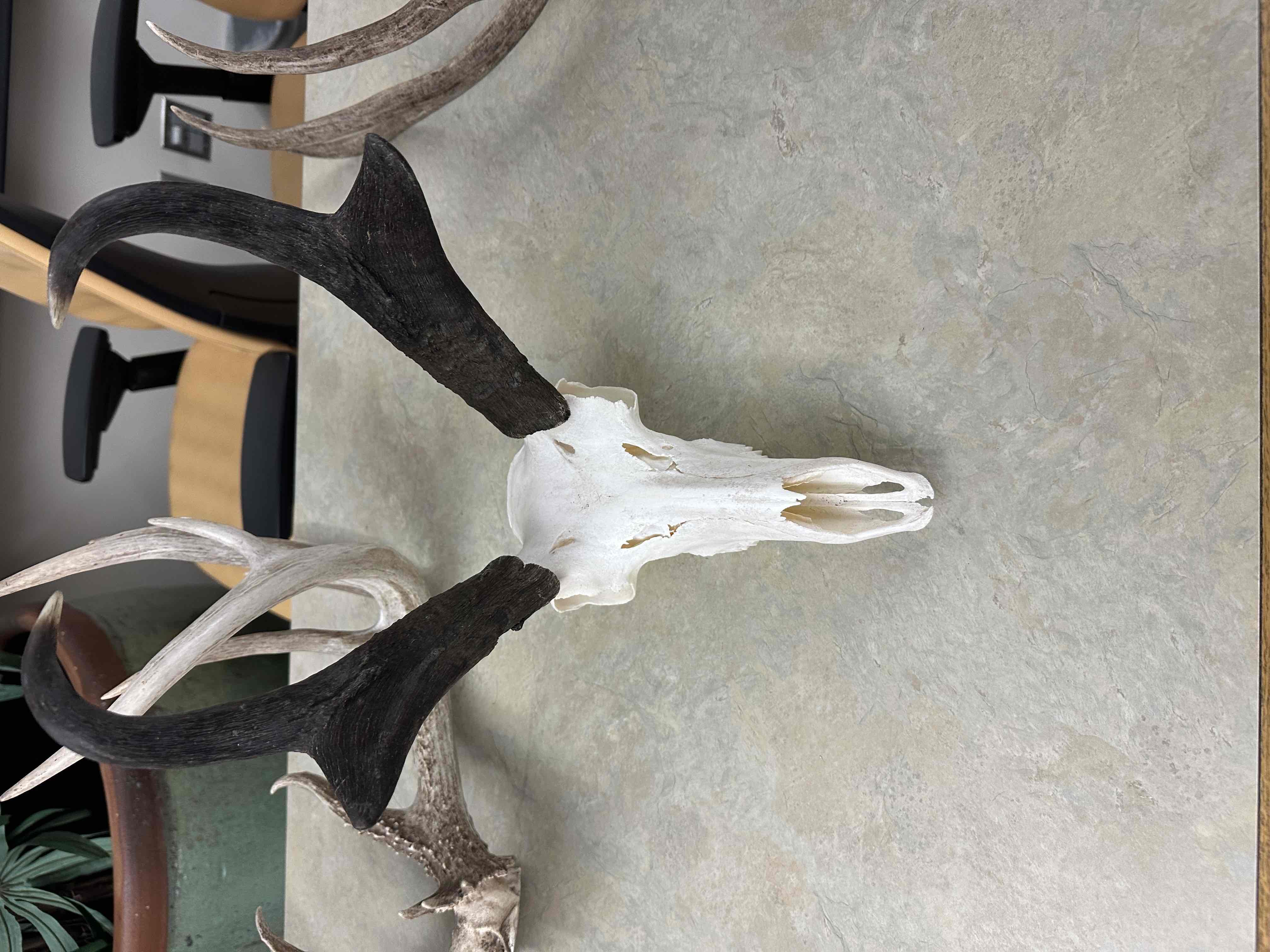
Antilocapra americana (pronghorn)
1. deciduous horns with bony core persistent in both sexes and horn sheath with one branch (prong) in males and no branches in females
2. frontal foramina
3. depression between protruding orbits
4. 32 teeth (0/3, 0/1, 3/3, 3/3)
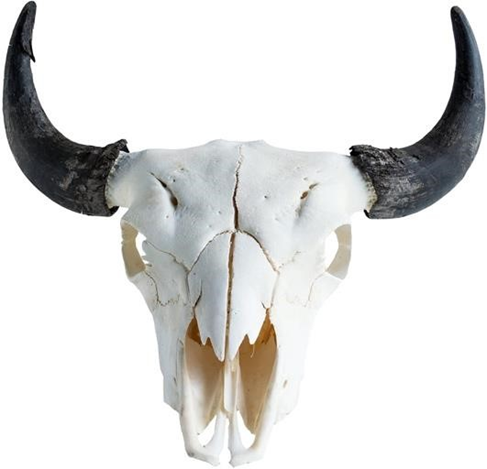
Bison bison (bison)
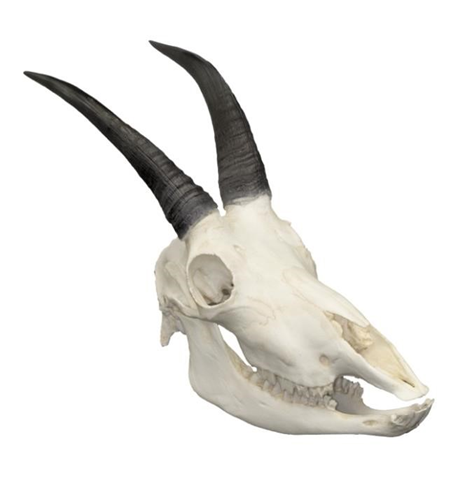
Oreamnos americanus (mountain goat)